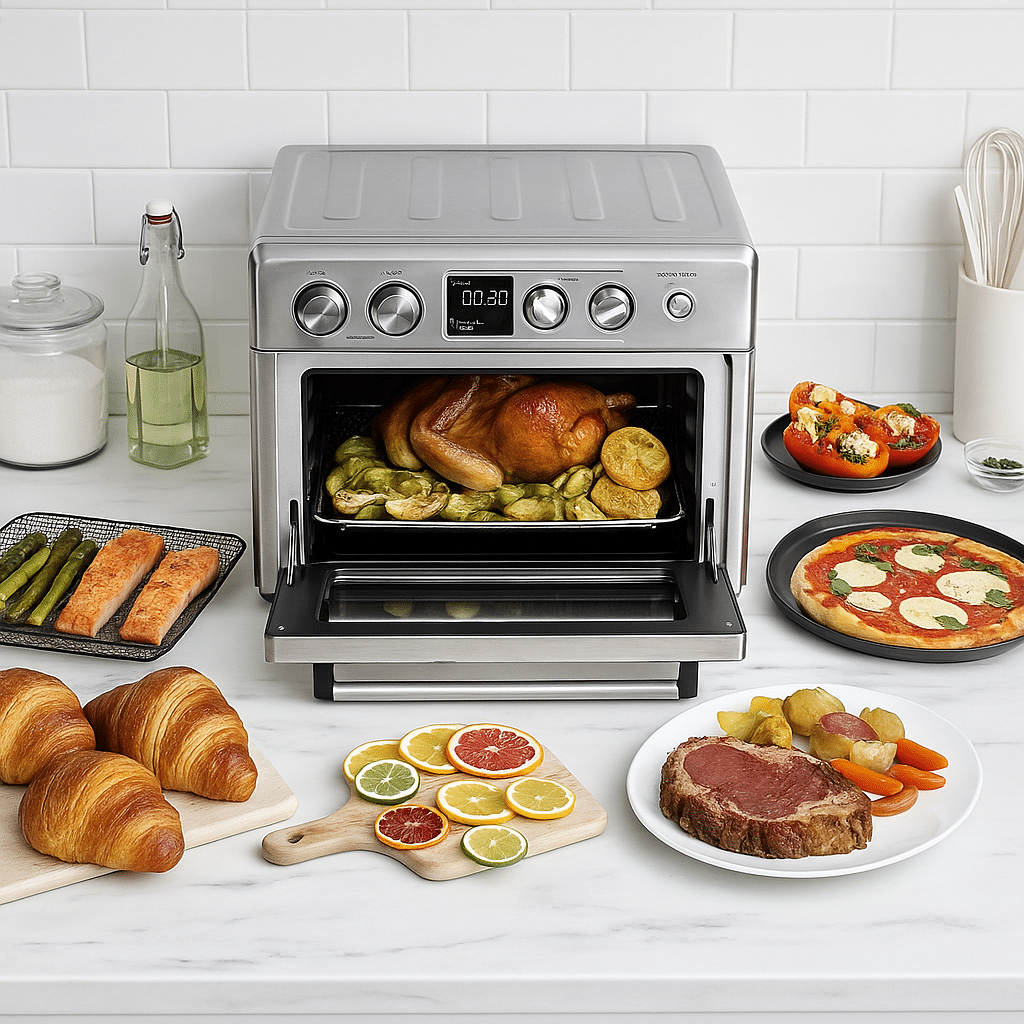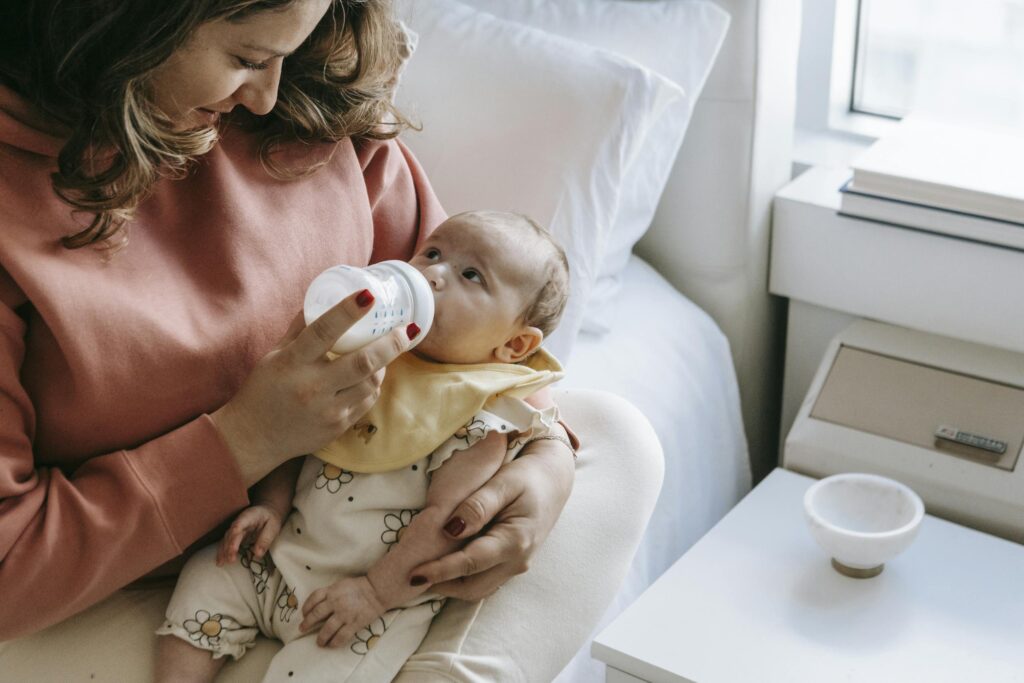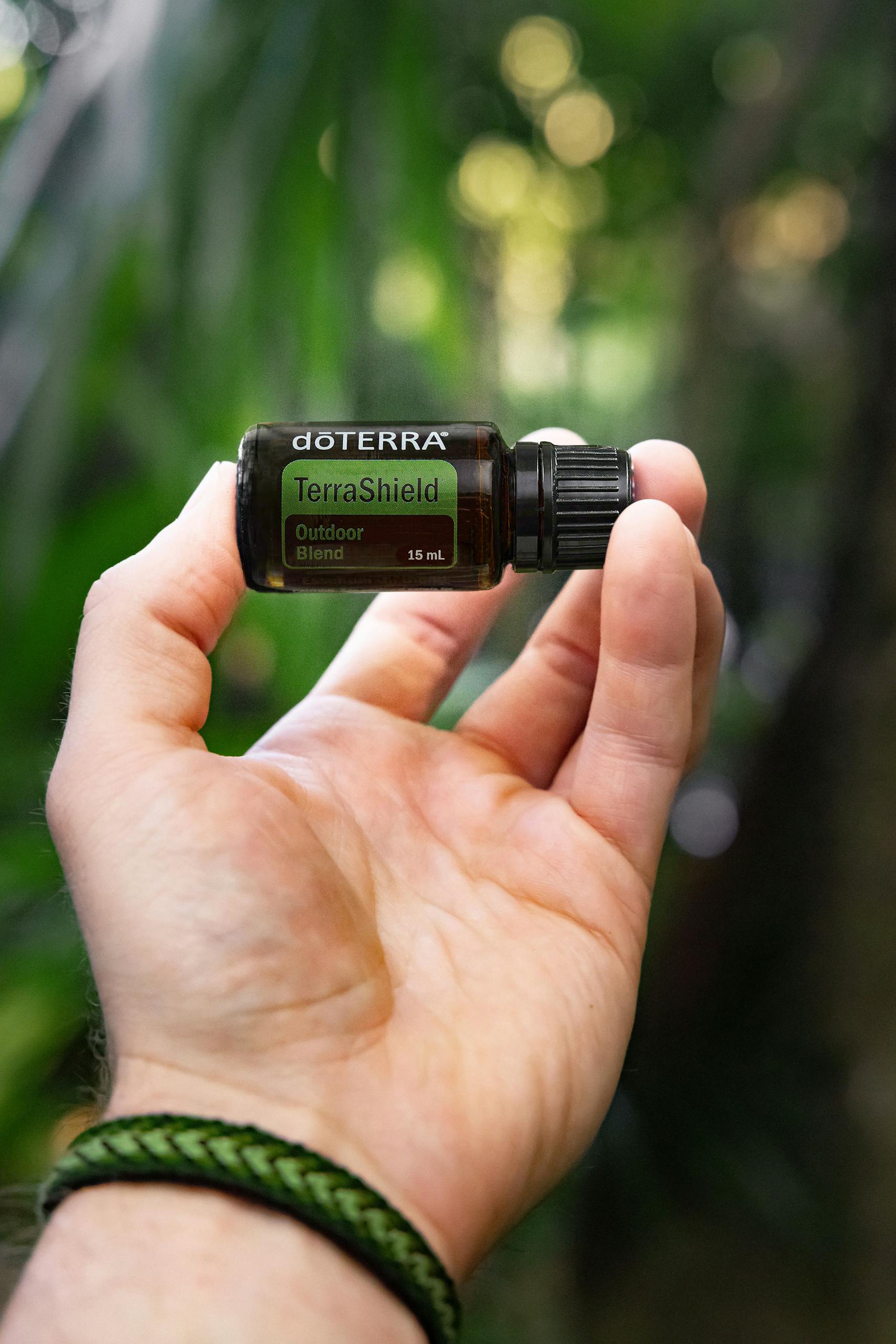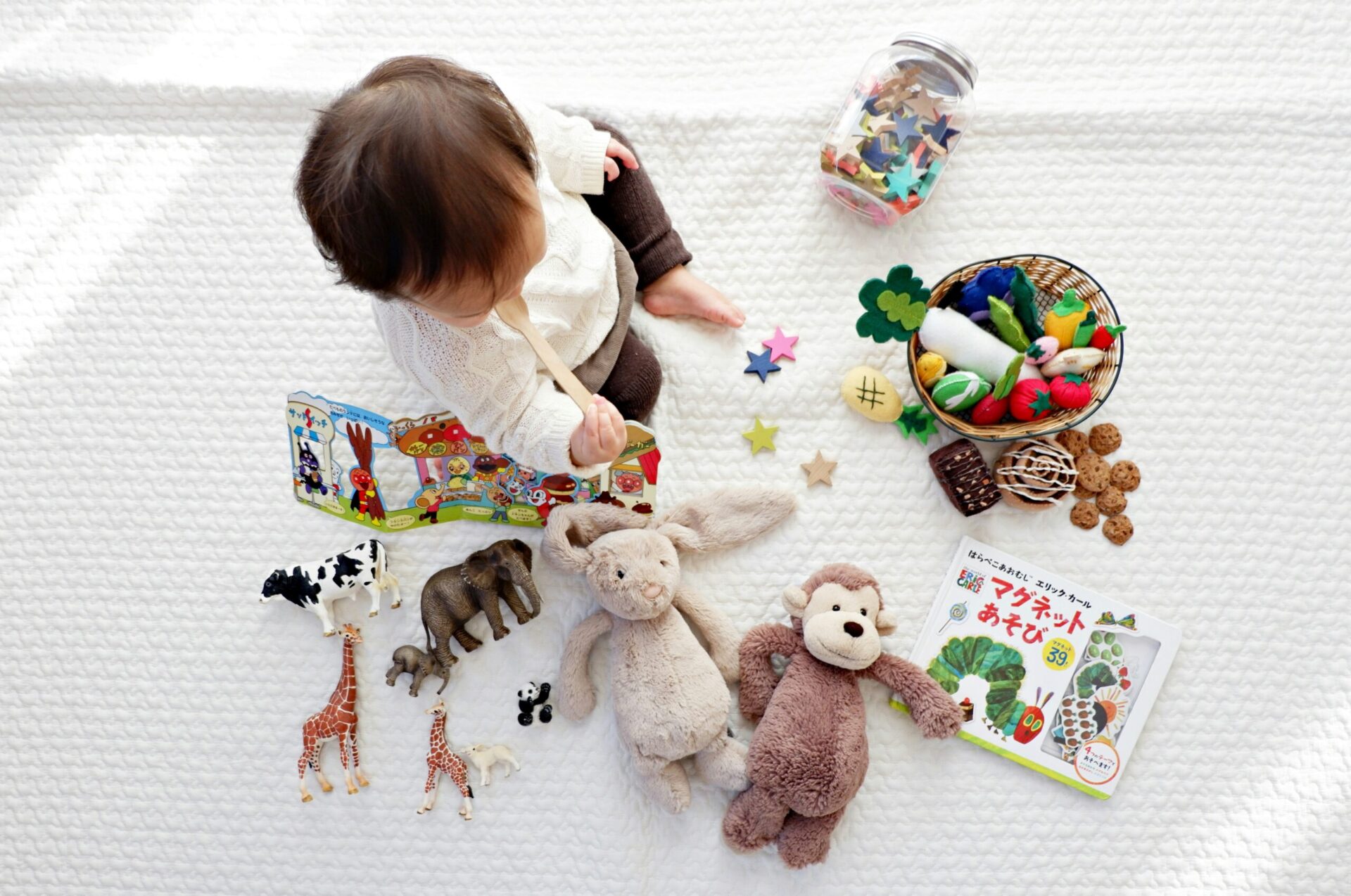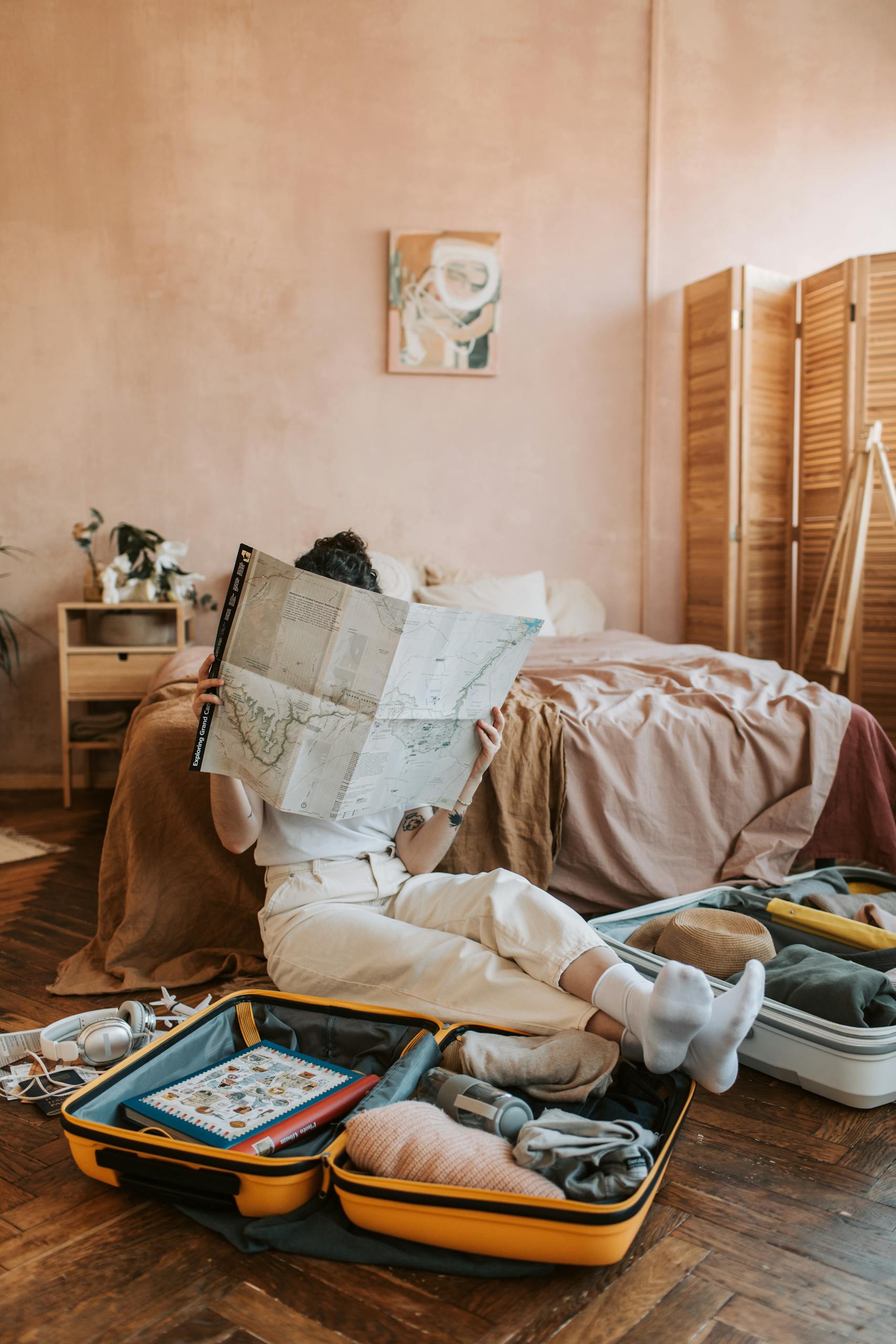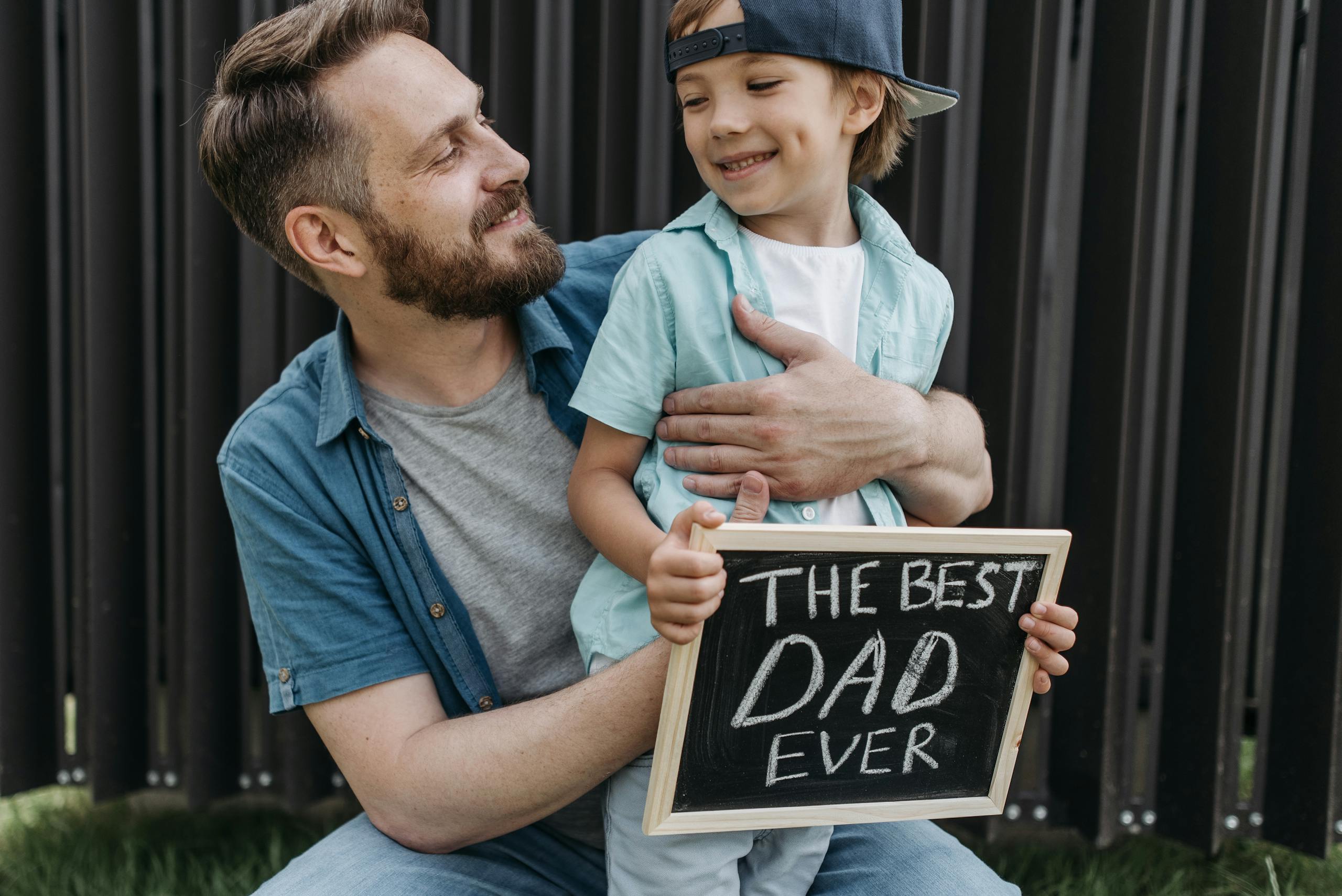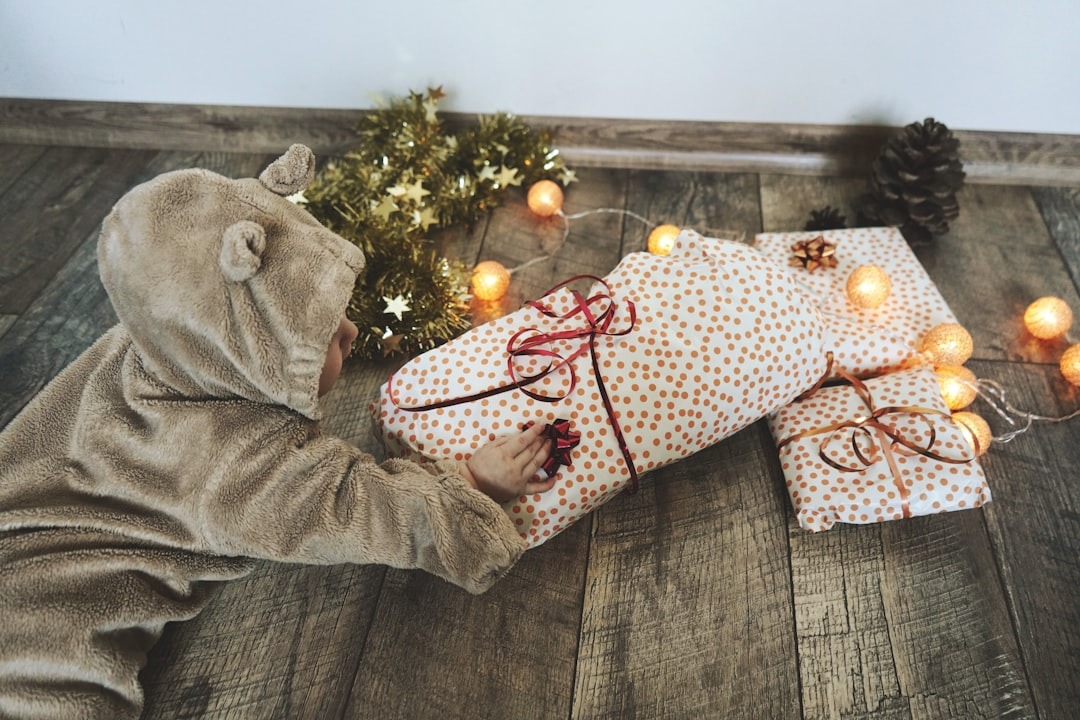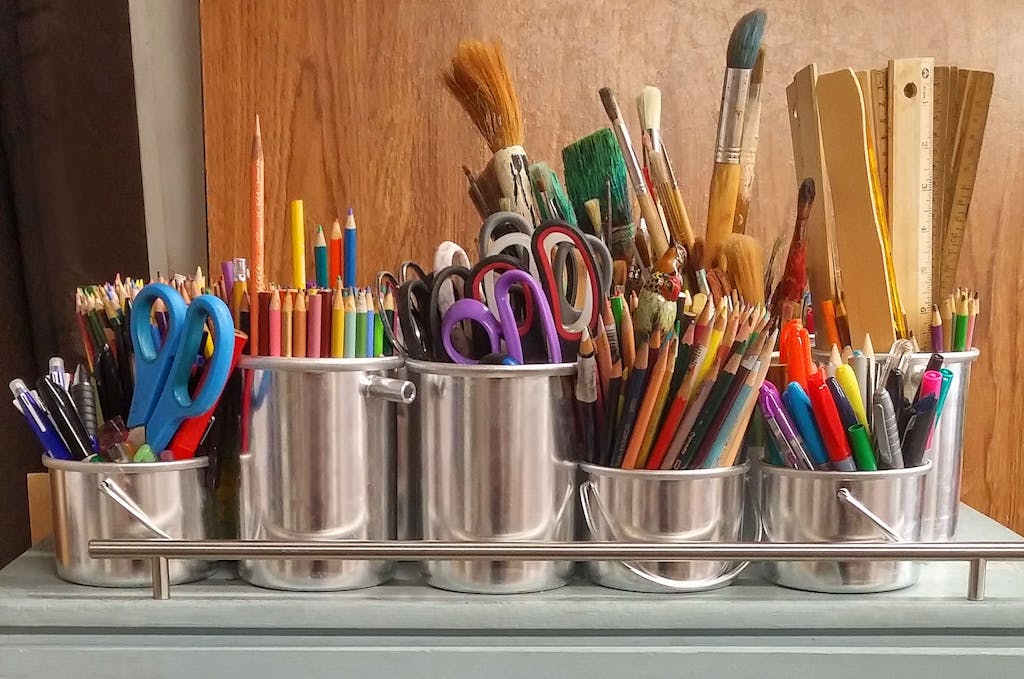
Back-to-school shopping is in full swing, but before you toss those standard supplies in your cart, take a pause. Choosing non-toxic school supplies matters—many everyday essentials, from crayons to lunch boxes, can contain hidden toxins that may impact your child’s health or the environment.
For example, a U.S. PIRG study found asbestos in some crayons, phthalates in plastic 3-ring binders, benzene in dry-erase markers, and even lead in kids’ water bottles. Children are especially vulnerable to such chemicals since their bodies are still developing.
The good news is that safer, eco-friendly alternatives are more available than ever. This guide will walk you through non-toxic school supplies and lunch gear – from backpacks and lunch boxes to art supplies – so your kids (from preschool to college) can head back to school safely and sustainably.
Before We Get Started…
If you’re 18–24, this is your chance to get all the best Prime perks at half the price with Amazon Prime for Young Adults.
Eligible ages: 18–24. Membership continues after trial at 50% off standard Prime.
Not 18–24?
You can still get all the savings and benefits of a standard Prime membership.
Includes fast, free delivery, Prime Video, exclusive deals, and more.
Why Choose Non-Toxic School Supplies?
“Non-toxic” isn’t just a buzzword – it means products without harmful chemicals that could affect kids’ health in the short or long term. Keep in mind that a “non-toxic” label on a product is not heavily regulated, so we need to do our own research.
Children spend hours using these supplies and eating from their lunch containers, so even low-level chemical exposures (endocrine disruptors or carcinogens) can add up over time. By choosing safer materials (like organic fabrics, stainless steel, or natural wax) and avoiding known toxins (like PVC, BPA, phthalates, and heavy metals), you’re taking preventive steps for your child’s health. Plus, many non-toxic options are also eco-friendly, helping reduce pollution and waste.
Prioritize items that have the most direct impact on your child’s body. For instance, lunch gear and water bottles should be at the top of your non-toxic school supplies shopping list, since harmful chemicals can leach into food and drinks that your kids ingest. Swapping plastic or chemically treated items for safer versions will give you more peace of mind than, say, choosing a recycled notebook. In the end, aim for progress, not perfection – even a few simple swaps can make a big difference in reducing your family’s toxic exposure.
Below, we’ve broken down the guide into categories with safe back-to-school picks. You’ll find non-toxic school supplies recommendations and tips for what to look for. Let’s get started!
Non-Toxic Backpacks (PVC-Free & Durable for All Ages)
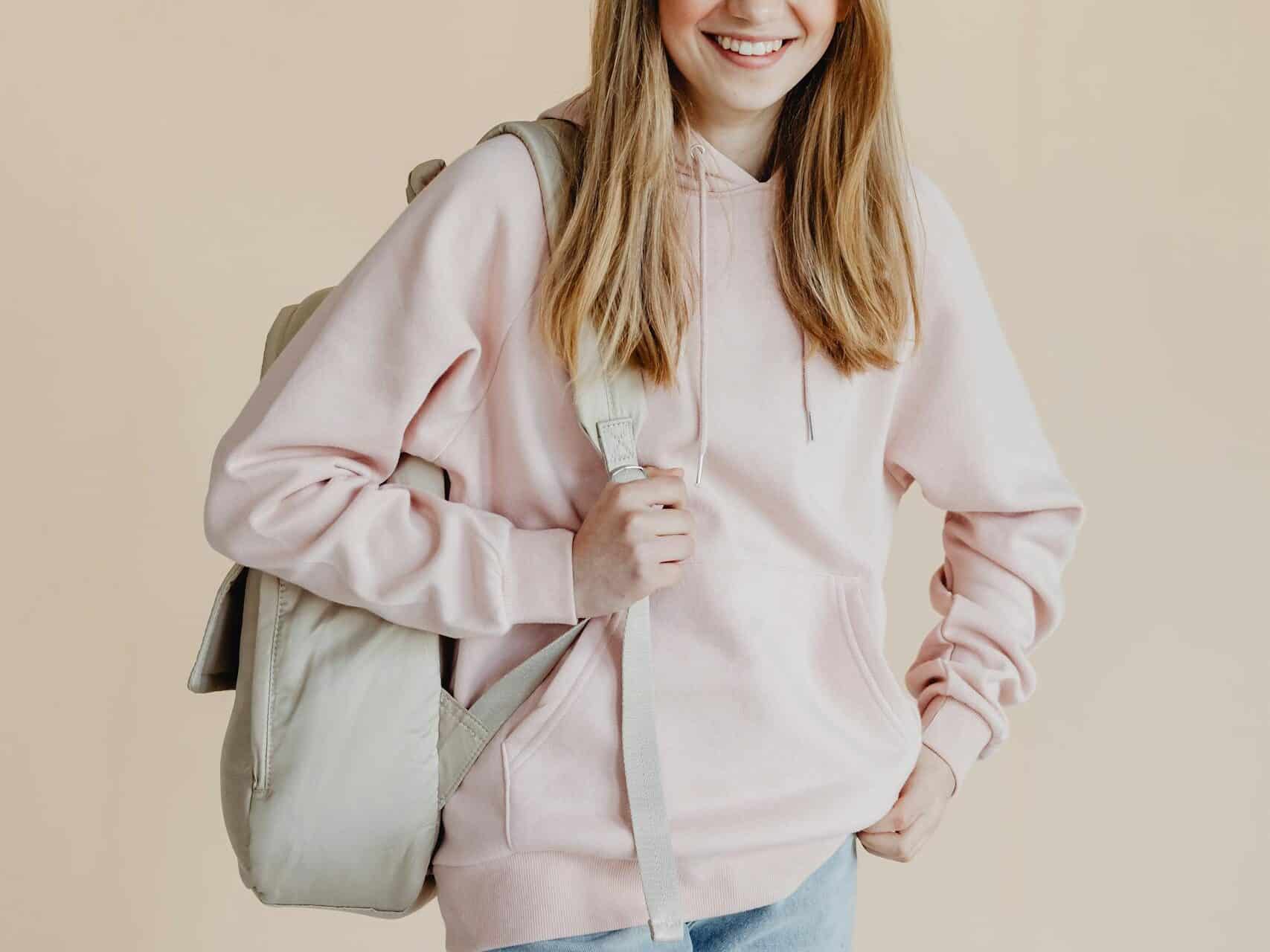
A sturdy backpack is a back-to-school must – but be careful with the materials. Avoid cheap vinyl backpacks at all costs. Vinyl is another name for PVC plastic, whose main ingredient (vinyl chloride) is a known human carcinogen. PVC often contains phthalates, chemicals used to soften plastic that are linked to hormone disruption.
But it’s not just about PVC. Many backpacks are also treated with PFAS (aka “forever chemicals”) to make them water-resistant or stain-repellent. These chemicals don’t break down in the environment—and they can build up in the body over time. Some are linked to developmental issues, hormone disruption, and even cancer. Kids carry backpacks every day, often touching them with bare hands, hugging them to their chest, or tossing them on the bed.
That “new backpack smell” could be telling you something! Instead, look for backpacks labeled “PVC-free” and, ideally, “PFAS-free” too. Safer materials include natural fibers (like cotton) and sturdy synthetics like polyester (preferably recycled) without toxic coatings. Bonus points if the backpack is also OEKO-TEX certified or made by a company that discloses full material safety.
Best Non-Toxic Backpacks for Preschoolers & Toddlers
Ten Little Toddler Backpack
This one’s a fan favorite for a reason. It’s Oeko-Tex certified, free from all the usual toxins (no BPA, phthalates, PVC, or lead), and perfectly sized for preschoolers. The straps are padded and comfy, and there’s even a name tag slot inside. It comes in two minimalist color options.
Jan & Jul Toddler Backpack
This small-but-mighty backpack is made from durable, water-resistant polyester that’s completely fluorocarbon-free (no PFAS!). It’s designed for ages 2 to 5 and has a chest strap to help keep it from slipping off tiny shoulders. We love that it’s free from PVC and other harsh chemicals and comes in fun patterns like dinos and forest animals.
The North Face Mini Explorer Backpack
This pack is made from recycled polyester with a non-PFC water-repellent finish, which means it’s likely free of PFAS (though not independently lab tested). The build is sturdy without being bulky, and it comes with all the practical features you’d expect from The North Face.
Fjällräven Kånken Mini
Kånken Minis have become a parenting favorite for good reason. They’re made from Vinylon F, a water-resistant fabric that doesn’t require a toxic coating—and Fjällräven has been completely fluorocarbon-free since 2009. The size is ideal for toddlers and preschoolers, and it still holds a lunchbox, water bottle, and change of clothes. It’s also the sturdiest mini-pack on this list, and the color options are endless.
Best Non-Toxic Backpacks for Elementary School Kids
JAN & JUL Little Xplorers Kids’ Backpack
Designed with growing kids in mind, this backpack is just the right size for elementary school essentials. It’s made from durable, water-resistant fabric that’s completely PFAS-free, with thoughtful features like chest straps, side bottle holders, and bright, fun patterns. Jan & Jul is one of the few brands that explicitly states they don’t use any fluorinated coatings—even on their water-resistant gear.
FORTNITE Multiplier Backpack
Yes, it’s cool. But it’s also clean. This backpack made Mamavation’s “Best” PFAS-Free Backpacks list, meaning it tested non-detect for fluorinated chemicals. It’s roomy enough for books, folders, and gear, with padded straps and multiple compartments.
Osprey Daylite Jr. Kids’ Commuter Backpack
Originally designed for hiking, the Daylite Jr. transitions seamlessly into school life. It’s made from bluesign® approved recycled polyester with a PFAS-free water-resistant coating, and it’s surprisingly spacious for its 10-liter size. This one is great for active kids, walkers, and bikers thanks to its padded straps and ergonomic design.
Best Non-Toxic Backpacks for Tweens, Teens & Beyond
adidas Excel Backpack
This one’s all over high school campuses—and for good reason. It holds a ton, has a padded laptop sleeve, and includes several organizational pockets. But unlike most big-brand bags, the adidas Excel was independently lab tested and found to have non-detect levels of PFAS (under 10ppm), landing it in Mamavation’s top category.
Fjällräven Kånken
The original Kånken is a Scandinavian classic—and it’s not just about looks. Fjällräven phased out all fluorocarbons in 2009, so this backpack has zero PFAS, no vinyl, and no sketchy coatings. It’s made from Vinylon F, which naturally repels moisture without added chemicals. It also fits a laptop, notebooks, and your teen’s entire personality.
Backpacks touch your child’s skin and carry all their stuff daily. By picking a non-toxic, well-made backpack, you eliminate exposure to nasty chemicals like vinyl chloride and phthalates and get a product that won’t fall apart by mid-year. It’s a win for your kid’s health and your wallet (no more yearly backpack replacements).
Safer Lunch Boxes & Lunch Bags (BPA-Free, Lead-Free Lunch Gear)

Lunch time shouldn’t come with a side of chemicals. Unfortunately, some traditional lunch boxes and lunch bags are made with problematic materials. Avoid soft vinyl lunch bags (they can contain lead or phthalates), and be cautious with cheap plastic lunch containers that may leach BPA/BPS or other bisphenols into food. Insulated lunch totes sometimes use foam with formaldehyde or coatings with PFAS (per- and polyfluoroalkyl substances) for water resistance. We want to skip all that and stick to food-grade, non-toxic materials.
What to look for: Lunch boxes labeled “BPA-free”, “PVC-free”, and “lead-free”. The safest options are usually stainless steel containers and lunch bags made of fabric with a food-safe liner (e.g. thermal lunch bags lined with PEVA, which is a safer plastic than PVC).
Top Lunch Gear Picks
PlanetBox Rover Stainless Steel Bento Kit
PlanetBox is the gold standard for non-toxic lunch gear. The Rover lunchbox is made from high-quality, food-grade stainless steel, with five compartments for variety-packed lunches that stay neat and separate. It comes with leakproof containers, fun matching magnets, and an insulated lunch bag that’s free from BPA, phthalates, and lead. This thing is practically indestructible—and kids love the visual layout with four design options (plus, no plastic taste leaching into their food).
FLUF Eat the Rainbow Zipper Lunch Bag
If you’re looking for a soft lunch bag that’s truly non-toxic, Fluf delivers. The exterior is GOTS-certified organic cotton, and the food-safe lining is made from recycled polyester with a tested non-toxic water-resistant finish—free from BPA, phthalates, and no PFAS. It zips shut, fits most bento-style boxes (including PlanetBox), and is fully machine washable, inside and out.
Eco Right Insulated Lunch Bag
Eco Right’s lunch bags combine style and sustainability in the best way. The exterior is sturdy cotton canvas, and the inner lining is made from recycled polyester designed to be leakproof and thermally insulated—keeping lunch cold for hours. While the brand doesn’t explicitly state PFAS-free status, they use a mechanical liner (not a chemical coating), and reviewers love that there’s no plasticky smell and zero vinyl.
By choosing non-toxic lunch gear, you prevent harmful chemicals from leaching into your child’s sandwich, snacks, and drinks. This is one area where going non-toxic is most crucial, since whatever touches their food ultimately goes into their body!
Waste-Free Food Containers & Snack Storage
Besides the main lunch box, consider the containers, wraps, and bottles that hold your child’s food. Single-use plastic baggies and plastic wrap are not only wasteful, but can also shed microplastics and contain chemicals like plasticizers.
Best Reusable, Non-Toxic Food Storage
Fluf Flip Snack Sack
These clever little pouches are the sustainable swap you didn’t know you needed. Made from the same organic cotton and food-safe lining as their lunch bags, the Flip Snack Sack is perfect for sandwiches, cut fruit, crackers—you name it. It flips closed with a simple fold-over design and it’s easy for little hands to manage on their own.
Stasher Bags
If you haven’t tried Stasher bags yet, get ready—they’re a game-changer. Made from 100% pure platinum-grade silicone, these reusable storage bags are free from BPA, BPS, lead, latex, and phthalates. They’re also dishwasher-safe, microwave-safe, freezer-safe, and even boilable. Use them for sandwiches, sliced fruit, crackers, or leftovers—they seal tightly and come in tons of fun colors and sizes.
Everusely Stainless Steel Containers
This set of five stainless steel containers with BPA-free silicone lids is perfect for everything from apple slices to hummus and crackers. The containers are made from food-grade 304 stainless steel, which won’t leach into food or absorb odors, and the colorful lids are designed to be leakproof (great for dips, dressings, or yogurt). They nest inside each other for easy storage and stack neatly in a lunch bag.
Bee’s Wrap Beeswax Food Wraps
Bee’s Wrap is made with organic cotton, beeswax, jojoba oil, and tree resin, creating a natural wrap that clings like plastic wrap—but without any of the toxins. Use it to wrap up sandwiches, cut fruit, cheese, or cover a small bowl. It softens with the warmth of your hands and forms a seal, then hardens in the fridge. Once worn out, it’s fully compostable.
By assembling a kit of stainless steel and reusable containers, you create a zero-waste lunch system that’s also non-toxic. Kids can easily manage these containers, and you’ll produce much less trash. Plus, you avoid mystery chemicals in plastic packaging touching the food. Win-win!
Safe Water Bottles (Stainless Steel & BPA-Free Hydration)
Keeping kids hydrated is important, but skip the cheap plastic water bottles. Some plastic bottles can leach chemicals (even BPA-free plastics might leach cousins like BPS). In fact, testing found lead in some kids’ aluminum water bottles with improper liners. The safest bet for a daily water bottle is food-grade stainless steel. Stainless steel bottles are durable, won’t leach, and keep drinks cold longer.
Top Water Bottle Choices
CamelBak Eddy+ Kids Insulated Stainless Steel Water Bottle
Designed for younger kids, this insulated version uses 18/8 stainless steel and includes a BPA-/phthalate-free bite valve straw. CamelBak confirms that they don’t use lead in their insulation process, unlike some competitors. The bottle keeps drinks cold and has fun designs kids love.
Hydro Flask Wide Flex Straw Cap Bottle
Hydro Flask pioneered lead‑free vacuum sealing over a decade ago and uses glass‑bead sealed technology, not lead solder. The body is made from 18/8 (304) stainless steel, which is BPA‑free and PFAS‑free by standard. This bottle lasts all day cold or hot, and its straw‑cap makes sipping easy and leak‑resistant.
Klean Kanteen Reflect with Bamboo Cap
Klean Kanteen’s Reflect bottle paired with a bamboo cap is fully stainless steel inside—the contents never touch plastic or paint . The bamboo cap is sealed around stainless steel, creating a completely plastic‑free system. The brand says the entire bottle is lead-free, BPA-free, and PFAS-free.
Lifefactory Glass Bottle with Silicone Sleeve
This one’s made from borosilicate glass, which is sturdier and more temperature-resistant than regular glass—so it holds up better to everyday use. The silicone sleeve adds grip and helps prevent breaks if it gets knocked around.
That said, this isn’t the bottle you’d send with a toddler or a kindergartener. It’s better suited for middle schoolers, high schoolers, or even adults—anyone old enough to keep track of their stuff and not toss it across the playground.
Owala Kids FreeSip Insulated Stainless Steel Bottle
Owala clearly states their sealed manufacturing has never used lead, and all products are BPA‑free and free from bisphenol analogs. The FreeSip lid combines a straw and wide-mouth chug design, is easy to clean, leak-proof, insulated, and beloved by kids.
CamelBak Eddy+ Kids Tritan Renew Water Bottle
If you must use a lightweight plastic bottle (for instance, some little kids prefer them or certain sports require it), choose one made from Tritan or other proven safe plastics. CamelBak’s Eddy+ made with Tritan Renew is a solid choice. Tritan is a BPA- and BPS-free plastic that’s been tested for safety and holds up well to everyday drops and backpack tosses. This version is made with 50% recycled materials, has an easy-to-use straw, and comes in fun, kid-approved designs.
While stainless steel and glass are still the gold standard, Tritan is a much safer option than older plastic bottles made with polycarbonate (the ones that used to contain BPA). Just be sure to swap it out if it gets scratched or cloudy, and stick to cold drinks only.
Always verify that the bottle is labeled “BPA-free” and “lead-free”. Many insulated stainless bottles have a solder dot on the bottom – reputable brands ensure this is lead-free (many cheap knockoffs had issues with lead in that seal point, which is why sticking to known brands is smart). With a good stainless steel or other non-toxic bottle, your child can sip safely all day.
Non-Toxic Art Supplies: Crayons, Markers, and More
Kids, especially the younger ones, tend to get up close and personal with their art supplies (ever seen a toddler tasting a crayon?). Choosing non-toxic art supplies is therefore essential. Fortunately, most major brands of crayons and markers are labeled “non-toxic” per art material standards – meaning they shouldn’t cause acute poisoning if ingested. However, some low-quality products have slipped through with nasty surprises like asbestos and heavy metals. Here’s how to stock a safe art kit with non-toxic school supplies:
Non-Toxic Crayons
Steer clear of dollar-store crayons or unknown brands, as these were the ones found to contain asbestos fibers in a past investigation. For a more natural option, try beeswax crayons. Brands like Honeysticks (made from 100% pure New Zealand beeswax) and Filana (organic beeswax crayons made in Colorado) use food-grade pigments and natural waxes.
These smell faintly of honey and are free from petroleum wax. They also tend to be harder to break – a plus for young artists. The colors from beeswax crayons are vibrant and they avoid the questionable residues that might be in cheap wax.
Non-Toxic Markers
Many markers (especially “washable” ones) are water-based and low-tox – but not all are equal. Avoid permanent markers or industrial markers for kids; those often contain solvents like xylene or toluene (which are VOCs and can harm breathing). Dry-erase markers can also have solvents (the “low odor” versions are slightly better).
For everyday coloring, go with washable markers – these use water-based inks and have been tested for safety. Also skip scented markers or gel pens, as “fun” fragrances can hide phthalates or undisclosed chemicals in the scent formula.
If your school list requires permanent markers, look for brands that explicitly say xylene-free/toluene-free. A great option for older students highlighting notes are the Edding EcoLine Highlighters, which are water-based, refillable, and made from 90% renewable resources – they even earned an eco-label for sustainability.
Non-Toxic Colored Pencils
Regular colored pencils are generally low concern, but check that the wood is untreated or the coating is non-toxic. Some colored pencils use laquer paint on the outside that could have trace heavy metals. To be very safe, you can choose untreated wooden pencils or ones marked as using water-based coatings.
One innovative choice is Sprout pencils (and colored pencils) which are made from sustainable wood and even have seeds in the end to plant when they’re too short – fun and eco-friendly!
The LYRA Waldorf Selection set is a great non-toxic option. Made from unlacquered natural wood with thick, vibrant cores and a triangular shape that helps kids with grip. They’re safe, sturdy, and ideal for little hands learning to color.
Non-Toxic Paints
When it comes to paint, water-based and washable is the way to go. Stick with products made specifically for children, and always check the label for non-toxic certification. Avoid adult-grade paints, which can contain solvents, heavy metals, or other ingredients.
Most kids’ finger paints, tempera paints, and watercolor sets from trusted brands are considered low-tox. But you still want to double-check the label for terms like “non-toxic,” “AP certified”.
Honeysticks Non-Toxic Watercolor Paint Set includes eight vibrant colors made with natural, food-grade ingredients. It’s safe for toddlers and young kids, and even comes with a paintbrush.
With art supplies, the key is choosing brands that disclose they are non-toxic (AP certified) and leaning towards those made from natural ingredients when available. If your child is the type to decorate themselves as much as the paper, these non-toxic school supplies will let them create freely and you can breathe easier.
School Glue & Adhesives (Stick with Non-Toxic Options)
Glue sticks and bottles are ubiquitous on school supply lists, especially for younger kids. The classic white school glue (like Elmer’s) is designed to be relatively safe – in fact, most school glues are labeled non-toxic. However, if you’ve ever wondered what’s actually in that glue, you’re not alone.
Companies aren’t required to list all ingredients (often citing “trade secrets”), so conventional glue may contain undisclosed additives. The primary ingredients in standard white glue are petroleum-based polymers. While these glues have low acute toxicity, there are greener alternatives that work just as well.
Better Glue Choices (Plant Based Glue)
One of the best swaps is to use plant-based glue. A highly recommended one is the Onyx and Green Plant-Based Glue Stick, which is made from natural plant-derived ingredients. It’s effectively a non-toxic, biodegradable glue stick that dries clear and holds paper and light materials nicely. Parents love that it’s free from harsh chemicals and even the packaging is recycled.
The same brand also offers a liquid school glue. If you need bottle glue for glitter projects or slime-making, a plant-based liquid glue is a safer bet than the conventional kind.
If you do stick with classic Elmer’s glue, choose the plain white version without any added scents or colors. Elmer’s School Glue is generally regarded as low-tox (it’s been used for decades in classrooms). Just avoid the trendy “scented” glue sticks, since those have added fragrances which could hide phthalates or allergens. Glue sticks that smell like cupcakes or fruit are fun, but that fragrance is not regulated and could contain harmful chemicals – best to skip.
Overall, standard school glue is one of the lesser toxic items in the grand scheme (it’s formulated to be kid-safe). But opting for a plant-based version is even better – it’s gentler for kids and more eco-friendly. Plus, many schools are focusing on non-toxic school supplies nowadays, so your choice might inspire others to swap too!
Sustainable Notebooks, Paper & Binders
Paper products are a huge part of school supplies – notebooks, loose-leaf paper, binders, folders, index cards, etc. While paper itself isn’t poisonous, there are still a few considerations to keep things non-toxic and earth-friendly.
Recycled Notebooks & Paper
Whenever possible, choose recycled paper products. Many brands offer notebooks and loose paper made from post-consumer recycled paper or even alternative fibers like sugarcane. For instance, you can find notebooks made from sugarcane bagasse (waste from sugar production) which are tree-free and bleach-free.
Recycled paper not only saves trees and energy, it also avoids the intensive bleaching process that virgin paper goes through. Look for labels like FSC-certified (sustainably sourced paper) or 100% recycled. One popular eco-friendly option is the Decomposition Book – these notebooks are 100% recycled paper, printed with soy-based ink, and come in fun cover designs. They prove that recycled can be cool!
Keep in mind, there is a small caveat: recycled paper can occasionally have tiny traces of BPA (because thermal receipt paper in recycling streams introduces BPA). However, the amounts are extremely low – and the benefit of recycling outweighs this concern for most, but if you’re very concerned you could mix in some notebooks made from alternative fiber (like sugarcane or bamboo) which wouldn’t have that issue.
Plastic Free Binders
Those shiny plastic binders with clear covers or strong “new binder smell” often are made of PVC. In fact, binders have historically contained phthalates to make the plastic flexible. The safer choice is to go with “PVC-free” binders.
Many brands now advertise PVC-free binders made of polypropylene or coated cardboard. Even better, try recycled cardboard binders – for example, Avery and Staples have lines of binders with recycled fiberboard covers (sometimes called Kraft binders). These function like regular 3-ring binders but without any vinyl. They often have a natural brown look which students can decorate themselves.
If you need a durable binder with a cover, search for PVC-free on the label. Also, avoid binders that have any strong chemical odor out of the package; it could indicate residual solvents or plasticizers.
Non-Toxic Folders
Opt for paper folders or those made from recycled paperboard. Many schools require pocket folders – instead of plastic ones, choose sturdy cardstock folders. They come in every color and do the job without adding to plastic pollution.
Recycled Index Cards & Post-its
Regular index cards are fine (they’re just paper), but you can find ones made from recycled paper too.
Sticky notes can be PVC-free and non-toxic as well; many are now made with water-based adhesive. There are even sticky notes made from recycled paper or bamboo.
These little choices cut down on chemical exposure (no need for brightly colored neon notes if they’re made with toxic dyes – opt for more natural or recycled versions).
Unbleached Printing Paper
If you’re sending an older student to college with a printer, stock them with chlorine-free, recycled printer paper. This prevents chlorine bleach by-products in the paper (which is better for the environment and potentially for indoor air quality).
In summary, seek out recycled and PVC-free on any paper products. It’s an easy swap: the functionality is the same, but you’re ensuring no toxic chemicals like phthalates or chlorine bleaches are in the mix. As a bonus, you’re reinforcing the market for non-toxic school supplies – teaching your kids sustainability by example.
Eco-Friendly Pencils & Pens
Good news: the standard yellow pencil is pretty safe! Pencils today are made of graphite (not real lead) and cedar or basswood. But there are still a couple of points to consider. The paint or lacquer on pencils can sometimes contain undesirable chemicals (cheap decorative pencils might have lead in the paint or designs). And many pens are plastic. Here’s how to upgrade your writing tools with non-toxic school supplies:
Wood Pencils (Unpainted or FSC-Certified)
For the safest option, you can buy unpainted pencils or those with a natural finish. For example, Ticonderoga EnviroStik #2 pencils have an unfinished natural wood barrel. No paint means no chance of heavy metals in the coating – plus they look elegant!
If you prefer painted pencils, stick to trusted brands like Dixon Ticonderoga (the classic), as they’ve been tested and adhere to safety standards (they are certified non-toxic as well). Also look for the FSC logo, indicating the wood was sustainably harvested.
Non-Toxic Mechanical Pencils
If your child is ready to upgrade from wood pencils, a refillable metal mechanical pencil is a great low-waste option. Look for one made from stainless steel. Zebra makes a durable, refillable version that holds up well in backpacks and pencil cases. It’s a smart swap that keeps plastic out of landfills and saves money in the long run.
Recycled Pens
For pens, the concern is less about toxicity in use (ink in a ballpoint is sealed, though some permanent inks have solvents) and more about materials and sustainability. To play it safe, you can choose pens with non-toxic ink (many gel pens and ballpoints are non-toxic by default).
If your student loves colored gel pens or markers, ensure they’re labeled ACMI non-toxic. One great option are pens made from recycled materials – for example, Pilot’s B2P pens use recycled plastic bottles for the pen body.
Onyx and Green makes pens from interesting materials like recycled milk cartons and even pens made of wheat straw and cork! These eco-pens write smoothly and avoid virgin plastic. Also consider refillable pens or those that take ink cartridges to cut down on waste.
By choosing greener pencils and pens, you avoid unnecessary chemicals and also teach kids about sustainable practices. They’ll still get the writing performance they need, but without the PVC eraser tips (opt for latex-free or phthalate-free erasers) and single-use plastics. Which leads us to…
Other Must-Haves: Erasers, Sharpeners, and Cleaning Supplies
Finally, let’s round up a few miscellaneous non-toxic school supplies that often appear on school lists:
Non-Toxic Erasers
Many classic pink erasers and those soft vinyl erasers are made of PVC or plastic that could contain phthalates. Instead, look for erasers labeled PVC-free and latex-free. Natural rubber erasers (if latex allergy isn’t an issue) are a good alternative. For example, the famed Koh-i-Noor “Elephant” erasers are made from natural rubber. These old-school erasers work great and are free from vinyl toxins.
There are also recycled rubber erasers and ones made from rice husk or other materials. At minimum, avoid heavily perfumed or gimmicky erasers (scented or toy-like erasers can have undisclosed chemicals). A straightforward white or pink eraser from a known brand (Staedtler, Prismacolor, etc.) is generally safe if it says “phthalate-free” or “PVC-free” on the package.
Safe Pencil Sharpeners
Stick to basic metal or aluminum sharpeners. Those are inert and last longer. If you get a plastic sharpener case, ensure it’s sturdy PP plastic, not brittle mystery plastic that could contain contaminants. Thankfully, pencil sharpeners are low concern – just avoid ones with unnecessary fragrances or coatings.
Plastic-Free Rulers
Choose a plain wooden over a flexible plastic one. Wooden rulers (especially those with a non-toxic finish or just bare wood) have zero chemicals to worry about. The flexible rubbery plastic rulers might contain PVC, so skip those.
Recycled Scissors
Kids’ scissors often have plastic handles. Opt for scissors that use recycled plastic handles (Westcott has “KleenEarth” scissors, for example, made with recycled materials). Ensure the blades are stainless steel (most are).
There’s not a huge toxicity issue with scissors, but by choosing recycled you again support eco-friendly production. And of course, no need for antimicrobial or scented handles on scissors – those are marketing gimmicks that add chemicals.
Non-Toxic Hand Sanitizer
Since 2020, hand sanitizers and wipes have become school-list regulars. If your child needs their own sanitizer, choose an alcohol-based, fragrance-free formula. Avoid sanitizers with triclosan or benzalkonium chloride (some older formulas had these antimicrobials which can be harsh and toxic).
Ethanol (60-70%) as the active ingredient is recommended. A good choice available on Amazon is Dr. Bronner’s Organic Hand Sanitizer. It has simple ingredients and no artificial fragrance.
For wipes, try to get plant-based or alcohol-based wipes. For example, Aunt Fannie’s Cleaning Wipes, which are basically vinegar and essential oils for cleaning surfaces – non-toxic but effective for sticky hands or desks.
Eco-Friendly Tissues & Paper Products
Some teachers request tissue boxes. Look for unbleached or chlorine-free tissues to avoid the chemical residues from bleaching. Or choose any that say “processed without chlorine.” It’s a small tweak, but it cuts down on your child’s exposure to chlorinated compounds (and is better for the environment). Likewise, if paper towels or wipes are needed, stick to unscented, chlorine-free ones.
A Note on Fragrances in Supplies
Many school items (markers, pencils, even notebooks or erasers) now come in scented varieties. It’s best to avoid fragranced products for kids. Synthetic fragrance mixes can contain dozens of chemicals, including phthalates and allergens, and companies don’t have to disclose them.
So that fruity-smelling notebook or cupcake-scented marker could be exposing your child to hormone-disrupting chemicals without you realizing. Stick to fragrance-free non-toxic school supplies (from unscented tissues to neutral-smelling supplies). Your child’s school day doesn’t need to be a cloud of artificial perfume – and some classmates might have sensitivities or allergies to those scents as well.
Conclusion: Healthy Kids, Healthy Planet
Making the switch to non-toxic school supplies might take a bit more research, but it’s well worth it. By choosing non-toxic school supplies, you’re protecting your children from exposure to harmful chemicals and creating a healthier learning environment.
Even small changes – like using beeswax crayons instead of cheap wax ones, or packing lunch in stainless steel instead of plastic – can significantly reduce the toxic load on your kids’ growing bodies. Plus, most of these non-toxic school supplies are high-quality and durable, so they often last longer, saving you money in the long run.
As a bonus, going non-toxic often means going green. You’ll be reducing plastic waste with reusable items and supporting sustainable companies. It’s a great opportunity to talk to your kids about why you’re choosing these non-toxic school supplies – empowering them to think about their health and the environment.
Back-to-school the non-toxic way is truly a win for everyone. Good luck with your shopping, and feel free to share this guide with other parents looking to detoxify their school supply list. Let’s make safe, non-toxic school supplies the new normal!
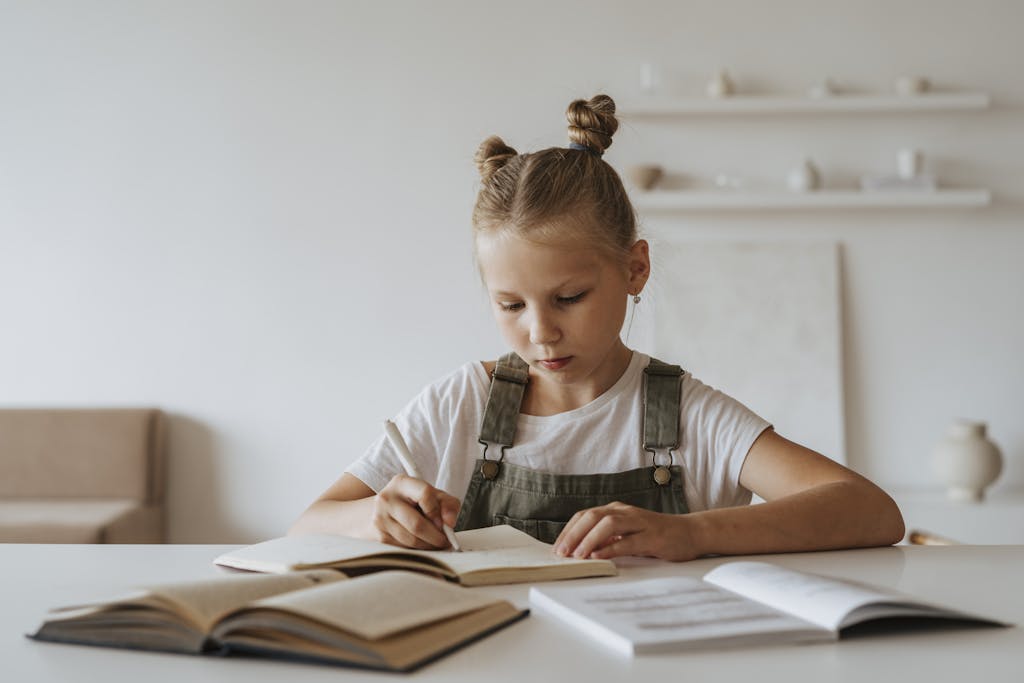
All product recommendations above are available via Amazon. Be sure to double-check product details and reviews – manufacturers do update materials over time. We researched the best non-toxic back to school supplies and product safety analyses to ensure you have the most up-to-date and trustworthy information on creating a safe school kit for your child.
join the newsletter
Want more non-toxic guides? Subscribe today.
